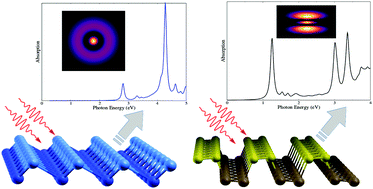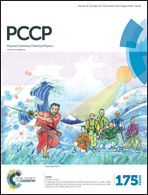Two-dimensional exciton properties in monolayer semiconducting phosphorus allotropes†
Abstract
Excitons play a key role in technological applications since they have a strong influence on determining the efficiency of photovoltaic devices. Recently, it has been shown that the allotropes of phosphorus possess an optical band gap that can be tuned over a wide range of values including the near-infrared and visible spectra, which would make them promising candidates for optoelectronic applications. In this work we carry out ab initio many-body perturbation theory calculations to study the excitonic effects on the optical properties of two-dimensional phosphorus allotropes: the case of blue and black monolayers. We elucidate the most relevant optical transitions, exciton binding energy spectrum as well as real-space exciton distribution, particularly focusing on the absorption spectrum dependence on the incident light polarization. In addition, based on our results, we use a set of effective hydrogenic models, in which the electron–hole Coulomb interaction is included to estimate exciton binding energies and radii. Our results show an excellent agreement between the many-body methodology and the effective models.


 Please wait while we load your content...
Please wait while we load your content...